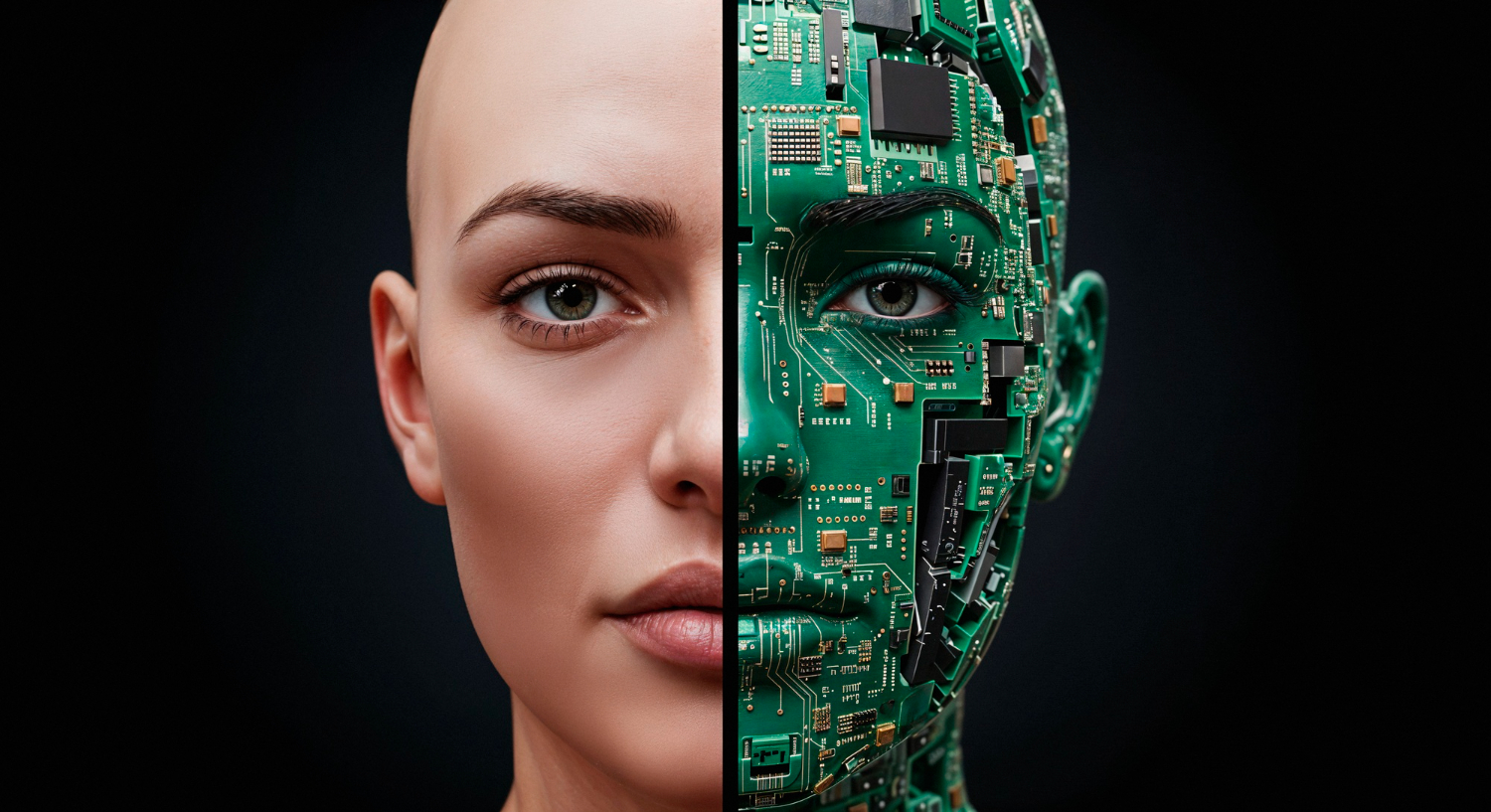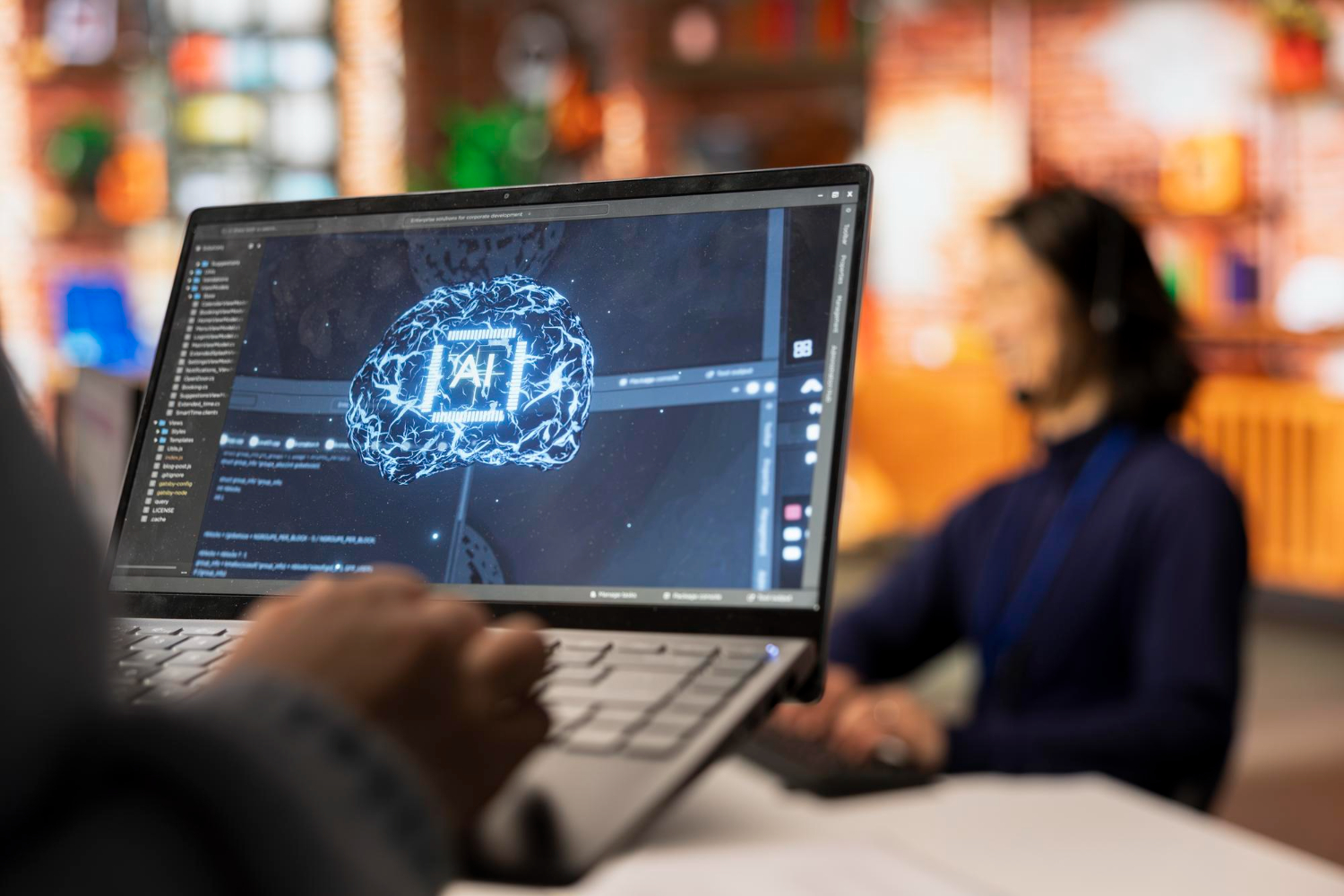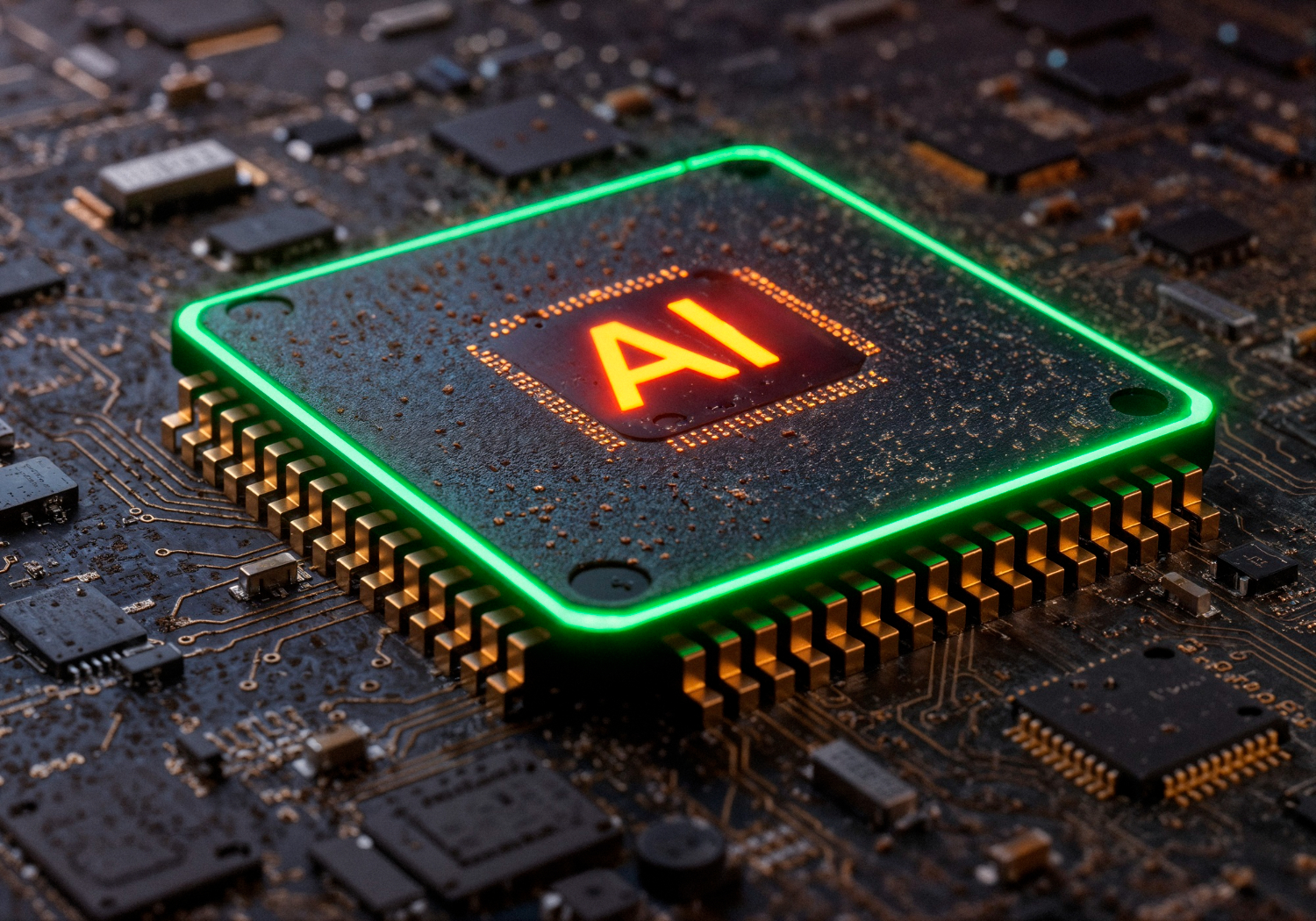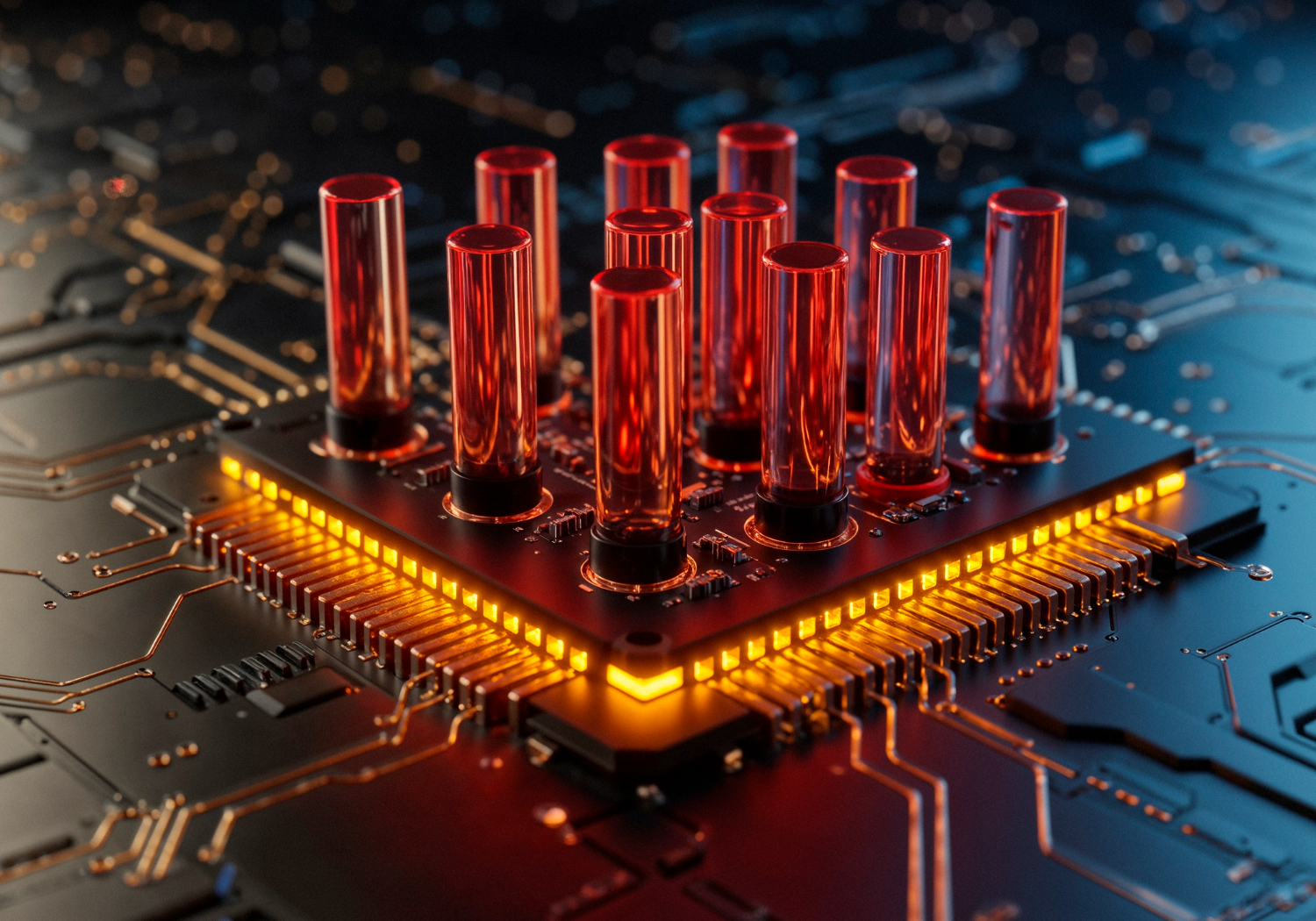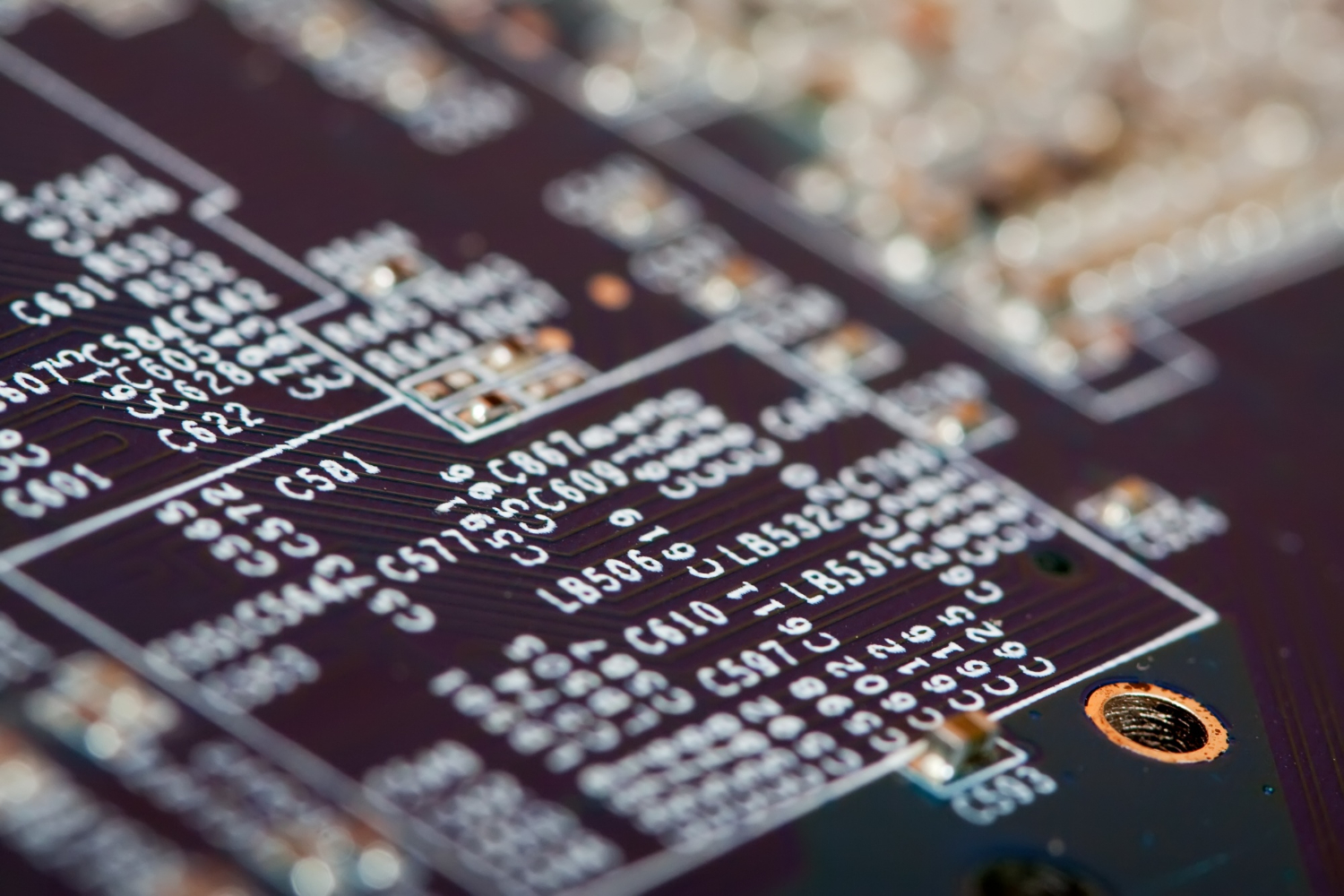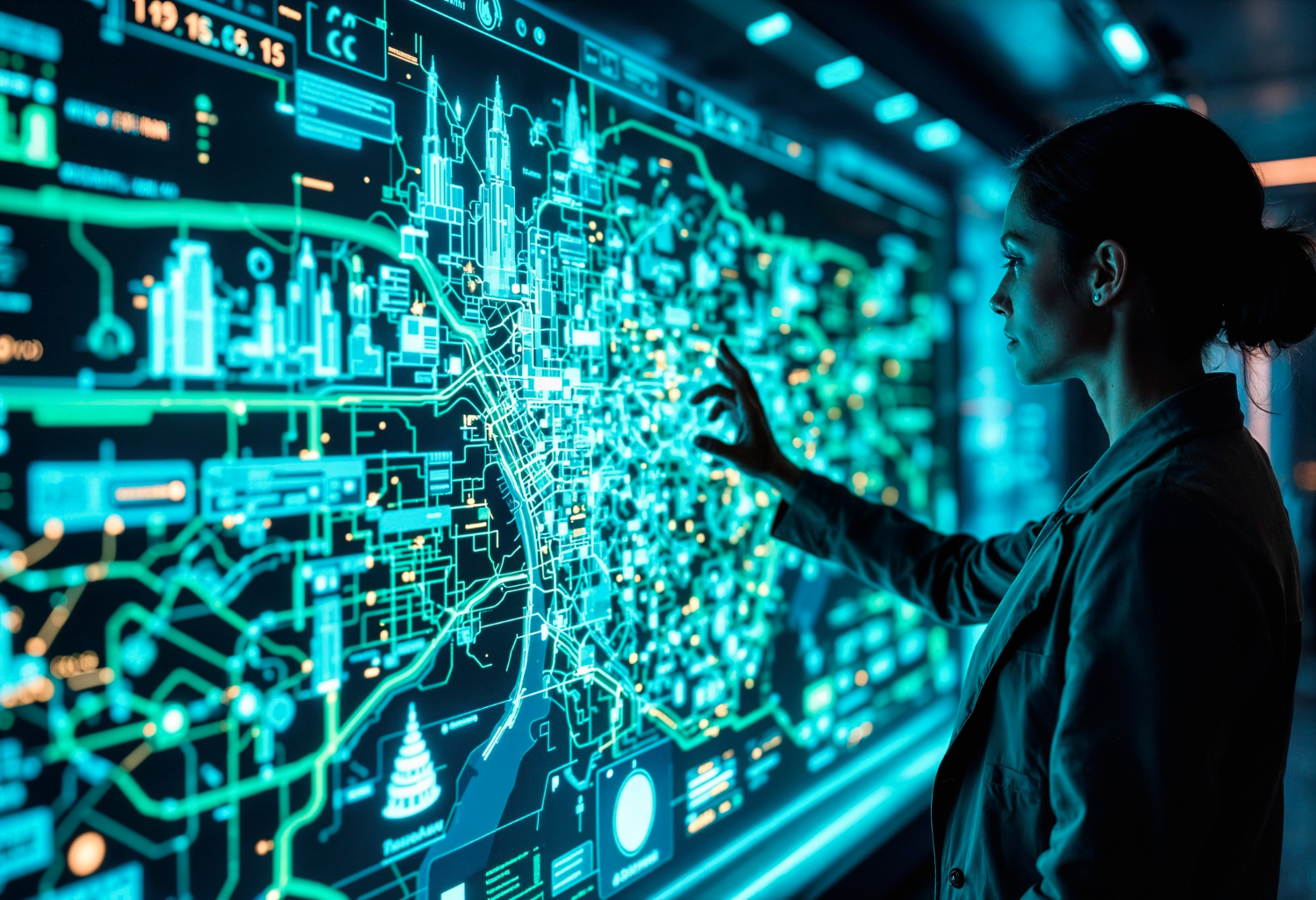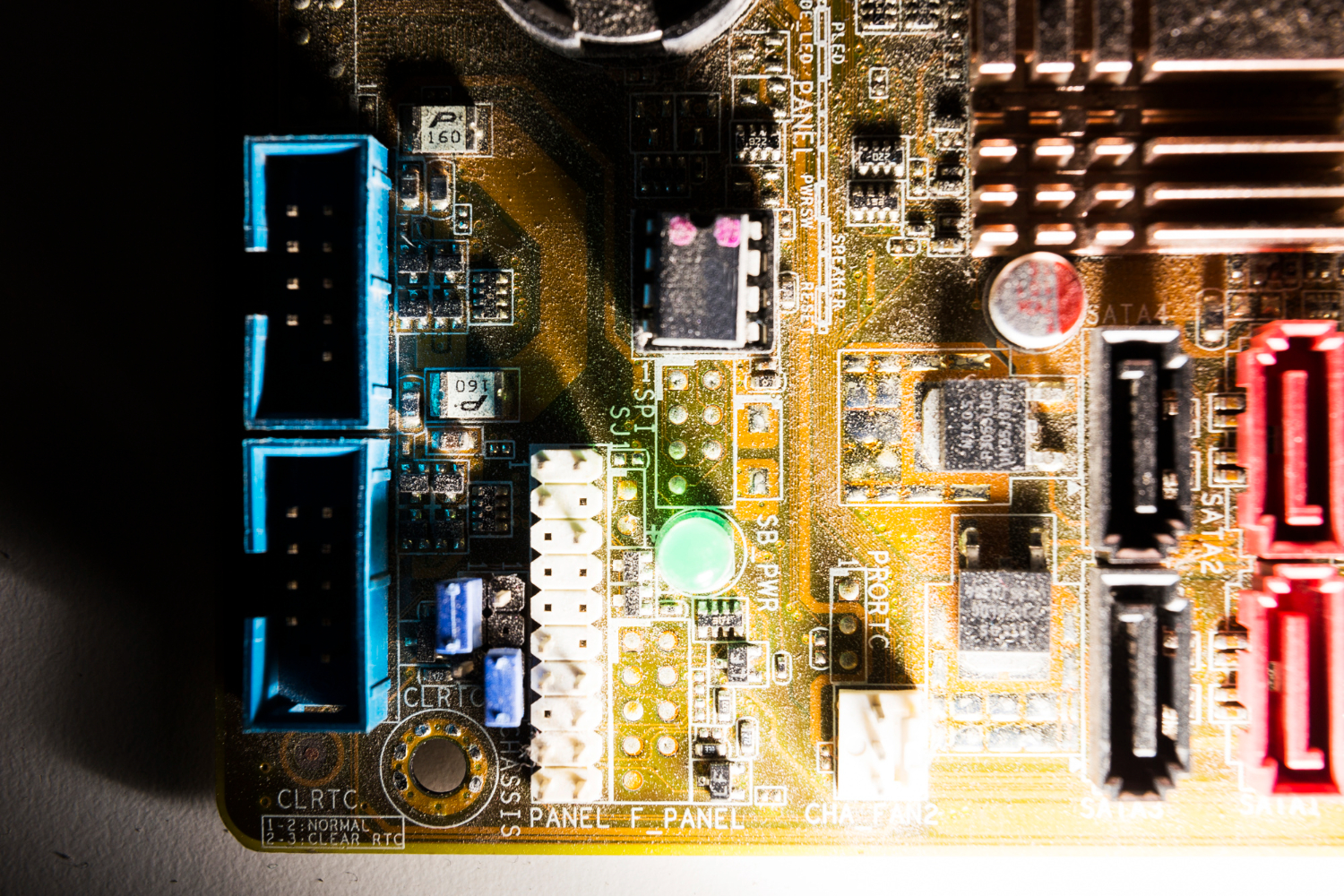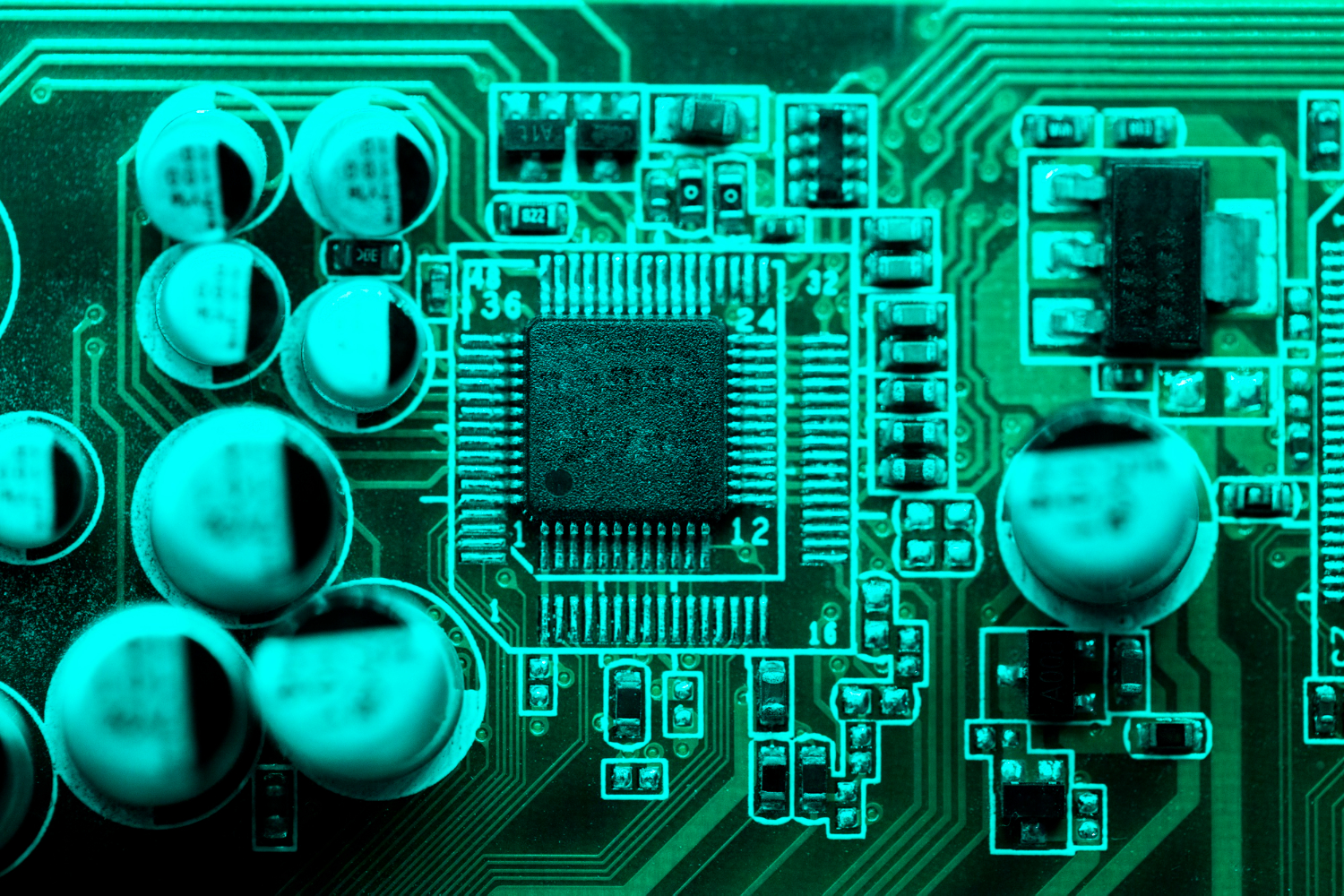Picture this. You step into a supermarket to buy your weekly groceries and supplies. As you enter, your phone buzzes with a welcome message. It tells you what aisles to go to for your weekly staples and suggests a new pasta sauce based on your past purchases. As you move through the aisles, deals based on your shopping list pop up in your notifications.
You pick out fresh produce, your favourite cereal, and the recommended sauce. As you approach the exit, there’s no need to unload your cart. Sensors scan your items and automatically charge your account. A digital receipt is sent to your email.

Introduction
The scenario you just read is made possible by integrating artificial intelligence (AI) into smart retail. Smart retail uses advanced technologies to create a more personalised and efficient shopping experience. The recent widespread acceptance and adoption of smart retail are more than just an implementation of cutting-edge technology. They represent a fundamental shift in how customers experience and interact with retail.
Experts predict that this shift will reflect in the global AI in the retail market skyrocketing to over $45.74 billion by 2032.
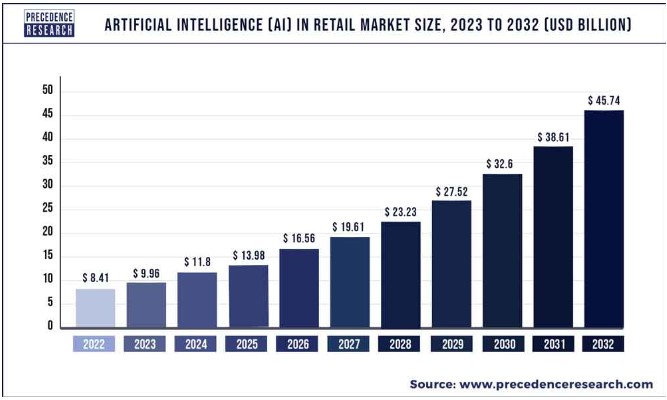
One of the most exciting aspects of this AI-powered retail transformation is that it’s not limited to large corporations. Small and medium-sized businesses can also use the power of AI tools to compete on a level playing field. Innovation is the catalyst behind this trend. Companies of all sizes can harness intelligent solutions and stay ahead in an increasingly tech-driven marketplace. In our modern, digital-centric world, embracing AI is a great option for retailers who want to remain competitive and thrive.
In this article, we’ll discuss various innovations in smart retail backed by AI technologies like computer vision, generative AI, IoT edge computing, and GPU acceleration. Let’s jump right into the exciting ways AI is reshaping shopping and unveiling opportunities for both businesses and eager shoppers.
What Can Smart Retail Offer?
Before we discuss the details of AI applications in smart retail, let’s briefly discuss what sets it apart and why it is important in urban areas.
Given the high population density and limited space in cities, smart retail technologies offer retailers the opportunity to maximise the use of their physical space. By implementing these technologies, stores can improve customer satisfaction, drive sales, and foster customer loyalty.
For example, smart retail can help take personalised shopping to the next level by using AI to recommend products based on what you like and what you’ve bought before. It also helps you find deals and promotions easily as you shop. Stores use smart shelves and RFID tags to keep track of inventory in real-time, so items you want are always in stock.
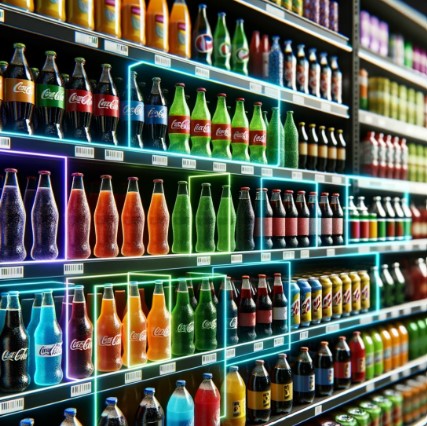
Behind the scenes, smart retail makes stores run smoother and more sustainably. IoT sensors efficiently manage everything from stock levels to staff scheduling. Predictive analytics cut down on waste by forecasting exactly what will be needed. And with smart energy systems, stores can save on bills and help the environment, making shopping smarter and greener.
Enhancing Customer Experiences Using Generative AI
Generative AI is a branch of AI focused on creating new and synthetic data. Using deep learning models, generative AI can sift through customer data and generate new customised content and suggestions.
One key application of generative AI in smart retail is creating personalised marketing and advertising content. By analysing a customer’s browsing history, purchase patterns, and demographic information, we can generate targeted ads, emails, and social media posts highly relevant to each individual’s interests.
For example, imagine a generative AI system analysing a customer’s outdoor gear purchase history. It crafts a personalised email with hiking and camping product suggestions tailored to their interests. This email not only showcases products they’re likely to enjoy but also provides custom descriptions and vivid images. Special offers on items like lightweight tents, high-performance backpacks, and durable hiking boots are featured. The model ensures every recommendation fits perfectly with the customer’s preferences and outdoor activities.

How is Generative AI Able to Create Such Emails?
Here’s a walkthrough of how this process works:
- Data Ingestion - Customer data from various sources, such as online browsing history, purchase records, and social media interactions, are collected and preprocessed to create a dataset.
- Model Training - A deep learning model is trained on the dataset using generative AI techniques, specifically algorithms like Generative Adversarial Networks (GANs) or Variational Autoencoders (VAEs). The trained model can discern complex patterns in the data and learn how to generate new, synthetic content that mimics real user behaviour and preferences.
- Content Generation - When creating a personalised marketing email, the trained model analyses the customer’s data and generates tailored product descriptions, images, and promotional offers.
- Personalisation and Delivery - The generated content is further customised with the customer’s name, location, and other relevant details before being delivered as a personalised email or ad.
The Role of Computer Vision in Customer Tracking
Computer vision is changing the way stores understand their customers. It allows computers to understand and interpret images and videos, similar to how our eyes and brains work together to see and understand the world around us. By watching how people shop, this technology helps stores figure out what shoppers like, when they prefer to visit, and how they move around the store.
For example, if a certain section of the store is getting a lot of attention but not many sales, the store might decide to switch things up a bit. Maybe they change how products are displayed or add more signs to help guide shoppers based on the insights from analying the store CCTV using computer vision. Also, knowing when the store is busiest can help schedule more staff, ensuring customers get the help they need without waiting.
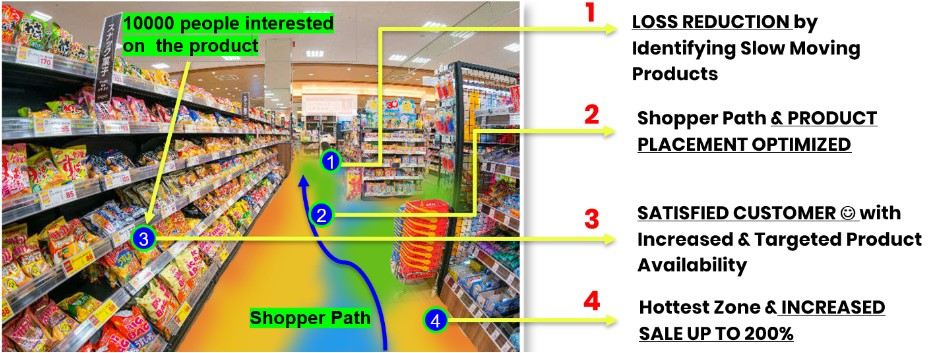
GPU Acceleration Supports Computer Vision
While the concept of computer vision may seem straightforward, its processing is quite complex. Computer vision involves algorithms and computational techniques that analyse visual data, identify patterns, and extract meaningful information from images and videos. This process requires a significant amount of computational power.
GPU (Graphics Processing Unit) acceleration is often used to handle the intensive computations involved in computer vision tasks, such as virtual try-ons or customer tracking. GPUs are specialised processors designed to handle parallel computations efficiently, making them ideal for tasks like image processing and deep learning, which are fundamental to computer vision applications.
Computer vision systems can perform complex calculations quickly by using GPU acceleration. Thanks to GPUs, real-time analysis of visual data and seamless generation of realistic simulations are possible. GPU acceleration helps ensure that customers are satisfied with the speed and efficiency of virtual try-ons. The aim is to have a smooth and immersive shopping experience.
The Power Behind Real-Time Retail Operations
Speaking of real-time analysis, real-time operations are essential in the retail industry to provide superior customer experiences and stay ahead of the competition. Computer vision and IoT edge computing technology are leading the way, enabling computers and systems to understand and examine visual information from digital images, videos, and various sources.
A notable application related to real-time operation is on-fly billing. On-fly billing is a checkout process that eliminates traditional cash registers and long queues. It integrates computer vision with other advanced technologies, such as sensor fusion, deep learning, mobile payment solutions, and IoT edge computing, to create a seamless and frictionless shopping experience.
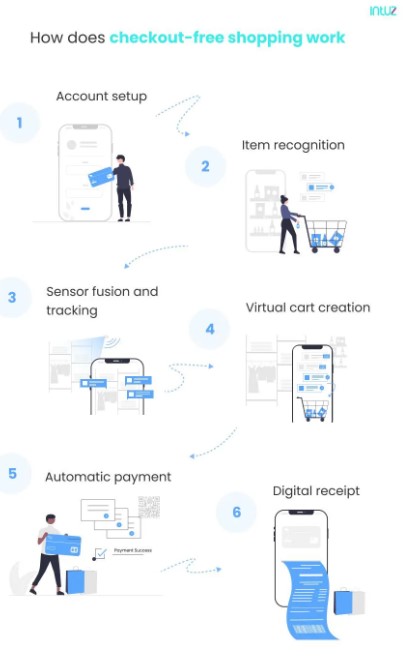
Here’s how it works, end-to-end:
Step 1: Account Setup
Customers create an account with the retailer, either through a mobile app or by registering for a loyalty programme. This account is their unique identifier linked to their payment methods.
Step 2: Store Setup
The store needs to implement a system of cameras, sensors, and other tools supporting computer vision and IoT edge computing. These technologies work together to accurately recognise items and seamlessly process transactions. IoT edge computing helps process data locally at the store level. Processing at the store level allows for real-time decision-making and reduces reliance on centralised cloud services.
Step 3: Item Recognition
As customers browse and select items, computer vision algorithms analyse the visual features of the products in real time. This includes identifying characteristics such as shape, colour, packaging, and any visible barcodes or QR codes to identify them accurately.
Step 4: Sensor Fusion and Tracking
Real-time billing systems use sensor fusion technology, a key part of IoT, to combine information from different sensors, such as weight sensors on shelves. The system can accurately track where customers go and how they interact with products. By doing this, the store can get a real-time picture of what customers are doing and how products are used. With this knowledge, it is possible to adapt to customer behaviour and automatically ensure product availability without manual oversight.
Step 5: Virtual Cart Creation
Identified products are automatically added to the customer’s virtual shopping cart, associated with their unique account.
Step 6: Automatic Payment
As the customer exits the store, the computer vision system tallies the items in the virtual cart, calculates the total cost, and automatically charges the payment method linked to the customer’s account. The need for manual payment processing is eliminated, saving time for both customers and store staff.
Step 7: Digital Receipt
After the transaction, customers receive a digital receipt accessible through their mobile app or email. Digital receipts provide a convenient and eco-friendly alternative to traditional paper receipts.
With on-fly billing, retailers can eliminate the hassle of manual scanning and long checkout lines. By cutting down wait times, retailers can completely transform the shopping experience. Customers can notice the difference, too. When retailers adopt on-fly billing, shopping is smoother, and customers keep returning to their stores.
The Synergy of AI Technologies in Smart Retail
The best part of smart retail is that it combines various AI technologies to make shopping smoother and more enjoyable. It’s all about making things work together in a smart and customer-friendly way. Let’s walk through an example of a smart retail store that uses different technologies in sync.
You walk into a store and are greeted by smart mirrors. These mirrors suggest outfits that are tailored to you. They use computer vision and image recognition to scan your current clothes. Based on this, they recommend items from the store’s collection. It’s as though you have a personal stylist at your disposal.
As you move through the store, conversational assistants are ready to assist. Powered by natural language processing, they answer your questions and guide you. It’s similar to conversing with a knowledgeable staff member.

Meanwhile, behind the scenes, predictive analytics and machine learning analyse purchasing patterns and inventory levels. They predict which items will become popular. Thanks to these technologies, the store can ensure it always has what customers want.
IoT edge computing devices monitor the store’s dynamics. They track how many people are inside and how they interact with the merchandise. This data influences pricing strategies, promotions, and marketing efforts.
In the background, automation and robotics take over repetitive tasks. These robots restock shelves and manage inventory efficiently and accurately. Facial recognition and sentiment analysis add another layer of personalisation. They assess your reactions to product displays or promotions. The store uses this information to customise the shopping experience and make it as positive as possible.
In the example we just went over, each piece of technology plays a vital role. The aim is for a shopping experience to be more than mere transactions. It becomes a personalised visit where technology anticipates and caters to your needs.
What We Can Offer as TechnoLynx
Here at TechnoLynx, we focus on using our expertise in computer vision, GPU acceleration, generative AI, and IoT edge computing to create innovative and tailored solutions. As a leading Software Research and Development Consulting Company, we specialise in helping high-tech startups and SMEs implement cutting-edge technologies.
We create optimised, sustainable, and personalised solutions to your unique business problems. TechnoLynx is dedicated to driving operational efficiency and delivering transformative outcomes for our clients. Connect with us to explore the possibilities of what we can accomplish together!
Conclusion
Smart retail is transforming shopping with AI applications like on-fly billing. Now, when you enter a store, you can get personalised recommendations right away. Checking out is effortless, with your items automatically scanned and your account charged as you leave. Technologies like generative AI and GPU acceleration are being used to anticipate your needs and make store operations smoother.
At TechnoLynx, we specialise in bringing such AI innovations to businesses big and small. We’re helping them create AI innovations that are not just efficient but also personalised. AI is a step forward in today’s fast-paced digital world, and we are here to assist you with that.
Sources for the images:
- Envato Elements (n.d.) Boutique client using clothing store app
- Nilay D. INTUZ (2023) Revolutionize Retail With IoT-Based Checkout-Free Shopping
- Precedence Research (2022) Artificial Intelligence In Retail Market
- Ajna AI (n.d.) Retail
References:
- Pantano, E. & Timmermans, H., 2014. What is smart for retailing? In 12th I`nternational Conference on Design and Decision Support Systems in Architecture and Urban Planning, DDSS 2014. ScienceDirect.
- Precedence Research, 2022. Artificial Intelligence (AI) in Retail Market.
- Singh, G., Srivastav, S., Gupta, A., & Garg, V., 2020. Companies Adoption Of IoT For Smart Retailing In Industry 4.0. In 2020 International Conference on Intelligent Engineering and Management (ICIEM). IEEE.
- Wei, Y., Tran, S., Xu, S., Kang, B., & Springer, M., 2020. Deep Learning for Retail Product Recognition: Challenges and Techniques. Computational Intelligence and Neuroscience, 2020, 8875910.

